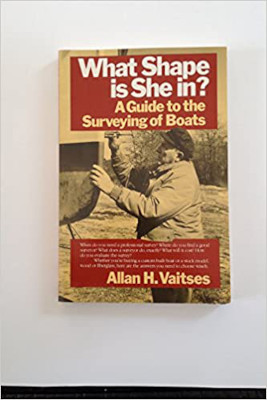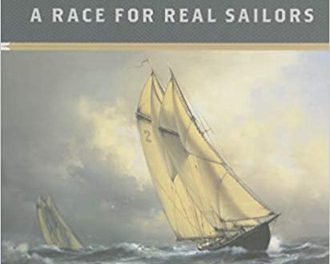
This is a book on surveying, and is well written. I advise every boatowner to read it. The author elucidates what it is that surveyors do, and every boater needs to understand the survey process.
Who? Selecting a surveyor is neither easy nor properly done by anyone other than you. (Nor should the surveyor be paid by anyone other than you.)
What? There is a lot of negotiating to do with your surveyor before the boat is present. Will there be a sea-trial or a land-based survey only? Will the engine be included? Does the surveyor know what you want the boat for? Can you be present at the time of survey?
What type of report do you need? The report can be long, short, technical or less so. It can be made for your-eyes-only or shared around.
The author gives an analytical and anecdotal material which will make you ask, “Why didn’t I know this?” Since they do the same task for the same clientele, the similarities are noteworthy and lend great assurance to each one’s respective authority.
What Shape is She In? Allan Vaitses is a great writer. His prose is wry and clear, and his eye for the human condition is the equal of the great novelists. His chapters are stories, each of a different boat. They are so packed with expertise revealed, human nature, and the day-to-day lore of the marina, that they are eminently re-readable as entertainment and for instruction. This is a little gem of a book — verily a sleeper with its small size, modest cover design, and odd, medical-sounding title.
But the really notable feature of Allan Vaitses is the Sherlock Holmes quality of his mind; the smallest detail blossoms before your eyes into logical conclusions on how the boat was built or used. This is then brilliantly transformed into the surveyor’s worries about the boat and its need for extra attention. That he gives you his findings and immediate thought process along a strict chronology is his delightful strength.
Allan is a full-time builder and repairer of sail and power vessels. Time and again, he expands on a finding in terms of exactly how that item is made, how it fails, and how it is repaired. No speculation, this guy does it!
The author has a pleasant and likeable persona in his book as well as a striking body of knowledge we don’t have . . . or even knew existed. This raises the final reason that every boatowner should read this book. It is known how boats are (differently) put together, and it is known how they come apart. Therefore, each of us must be somewhat of a surveyor of our own boat in an ongoing fashion. To the question, “Do I need to know how to survey?” The answer is: “Of your boat, absolutely!” Having said that unequivocally, the other more subtle reason is to know just how much help is out there for you if and when you need it.
Besides being extremely pleasant and informative reading, this book will leave you a better skipper, a better shepherd of your vessel’s parts and systems, and a wiser and more effective consumer of marine services. If that’s not enough, should you be now, or in the future, a buyer of a vessel, these authors can and will save you.
What Shape is She in? A Guide to Surveying of Boats by Allan Vaitses (International Marine, 1985; 165 pages)




